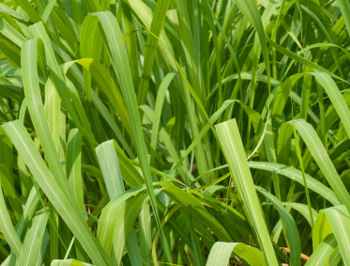Tiny Mosquito
How Do Mosquito Plants Work?
Would you like to be able to enjoy the outdoors in peace? An effective way to keep mosquitoes off your property is to include mosquito plants as part of your landscape. The pungent oils in the leaves of these plants are effective in repelling mosquitoes; they emit an odor that is repugnant to the pesky insects. Mosquito plants are not only a natural repellent, but also a beautiful addition to your garden.
 What is the
Mosquito Plant?
What is the
Mosquito Plant?
There are actually two plants that chase away mosquitoes: one is the well-known
citronella plant, which has been recognized as a natural mosquito repellent
for a long time, and the other is a hybrid. The hybrid is a combination
of the hardy perennial geranium and the citronella plant. Due to the hardiness
of the geranium, the hybrid mosquito plant can grow in relatively cold
climates, with minimal care. Its attractive foliage and sweet lemon scent
makes it a popular choice with homeowners.
Planting Location
Mosquitoes are repelled when the scent that is trapped inside the mosquito
plant’s leaves escapes, which occurs when there is the slightest
movement. When anyone or anything disturbs the plant (humans or pets),
small particles of oil are released into the air, creating a smell that
mosquitoes dislike. By placing the mosquito plants around your deck, patio,
or along a busy pathway, or in a particularly windy area of your garden,
you will give yourself a fighting chance against mosquitoes invading your
yard.
Smart Ways to Utilize the Mosquito Plant
Another effective and safe way to repel mosquitoes is to break off the
plant’s leaves, crush the foliage to extract the oil, and then rub
the oil onto your clothes or skin.
Lovers of the outdoors often bring potted mosquito plants to the cottage
or on a camping trip. By placing the pots near the entrance of their living
space, they get some relief from the typical flood of mosquitoes that
inhabit woodsy areas.
Other Varieties of Mosquito Plants
The agastache cana, a member of the mint family (sometimes called bubblegum
mint) is often referred to as a mosquito plant. It works in the same way
as the citronella-geranium hybrid plant, with scented foliage that needs
movement in order to release its repellent.
There are a few different varieties that are hardy; the most popular ones include:
- Heather Queen – Growing up to 3 feet tall, this plant has striking pink flowers that can reach up to 12” in length. It blooms from early summer to late fall.
- Anise Hyssop – Standing a 3 foot tall stalk, this plant displays purple-blue flowers that have a sweet licorice-like taste, often used to make herbal teas and add flavor to food. It grows best in zones 7 to 10.
Many gardeners believe that a planted hedge of catnip or rosemary around the deck or patio forms a barrier against mosquitoes – that their naturally strong scent keeps mosquitoes away. However, both these herbs require the same meticulous care as annuals in most climates. You would do well to keep them in pots and bring them in for the winter.
Whether you prefer to use the citronella-geranium, one of the agastache
cana plants, or a pot of catnip and/or rosemary, these mosquito plants
are known to be effective as repellents; all are blessed with the scented
oils in their foliage. Natural and completely harmless to humans and animals,
mosquito plants are a beneficial and beautiful addition to any garden.
Home - Mosquitoes - Bites - Control - Diseases - Resources - Site Map